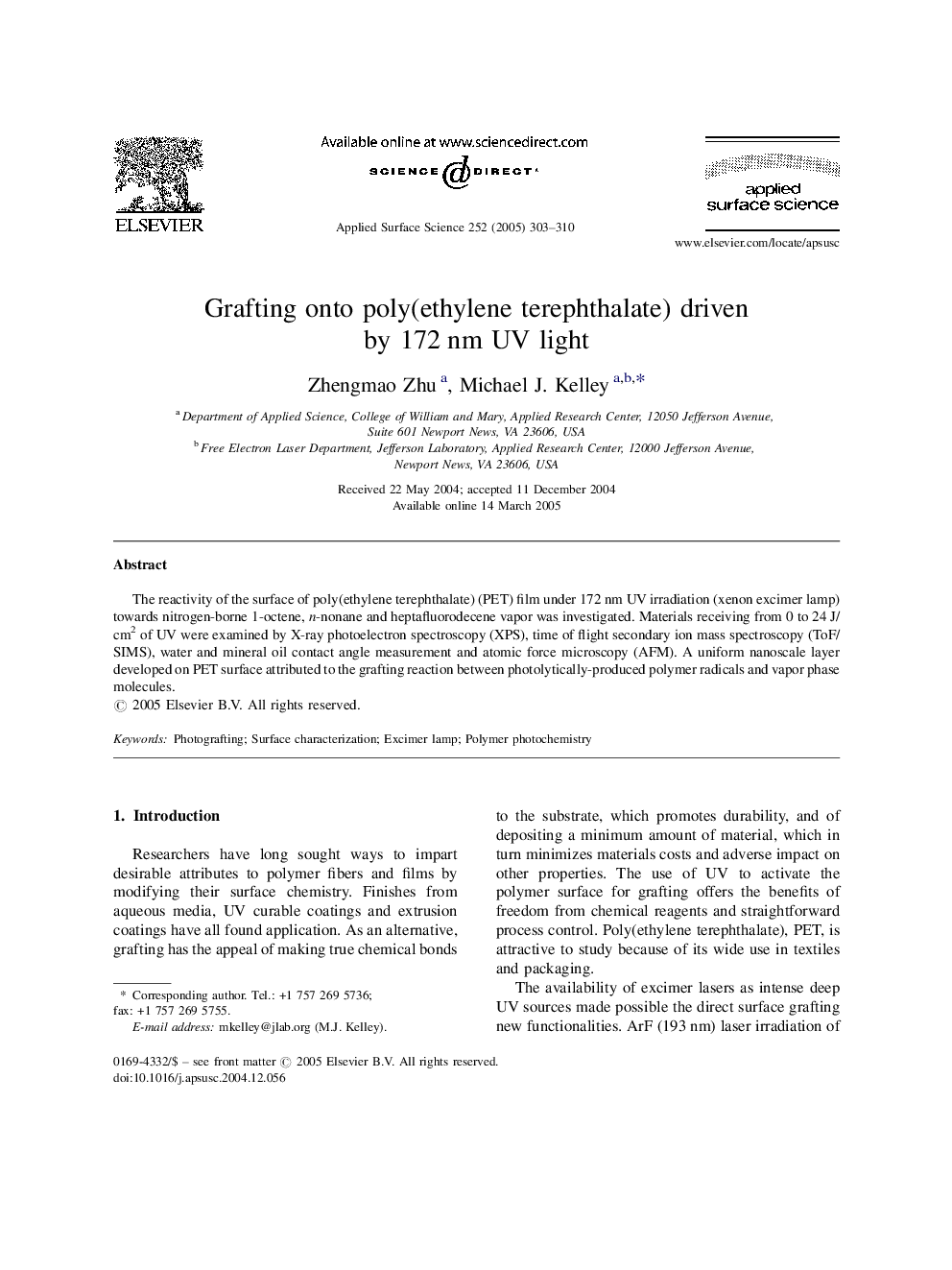| Article ID | Journal | Published Year | Pages | File Type |
|---|---|---|---|---|
| 9567023 | Applied Surface Science | 2005 | 8 Pages |
Abstract
The reactivity of the surface of poly(ethylene terephthalate) (PET) film under 172Â nm UV irradiation (xenon excimer lamp) towards nitrogen-borne 1-octene, n-nonane and heptafluorodecene vapor was investigated. Materials receiving from 0 to 24Â J/cm2 of UV were examined by X-ray photoelectron spectroscopy (XPS), time of flight secondary ion mass spectroscopy (ToF/SIMS), water and mineral oil contact angle measurement and atomic force microscopy (AFM). A uniform nanoscale layer developed on PET surface attributed to the grafting reaction between photolytically-produced polymer radicals and vapor phase molecules.
Related Topics
Physical Sciences and Engineering
Chemistry
Physical and Theoretical Chemistry
Authors
Zhengmao Zhu, Michael J. Kelley,
